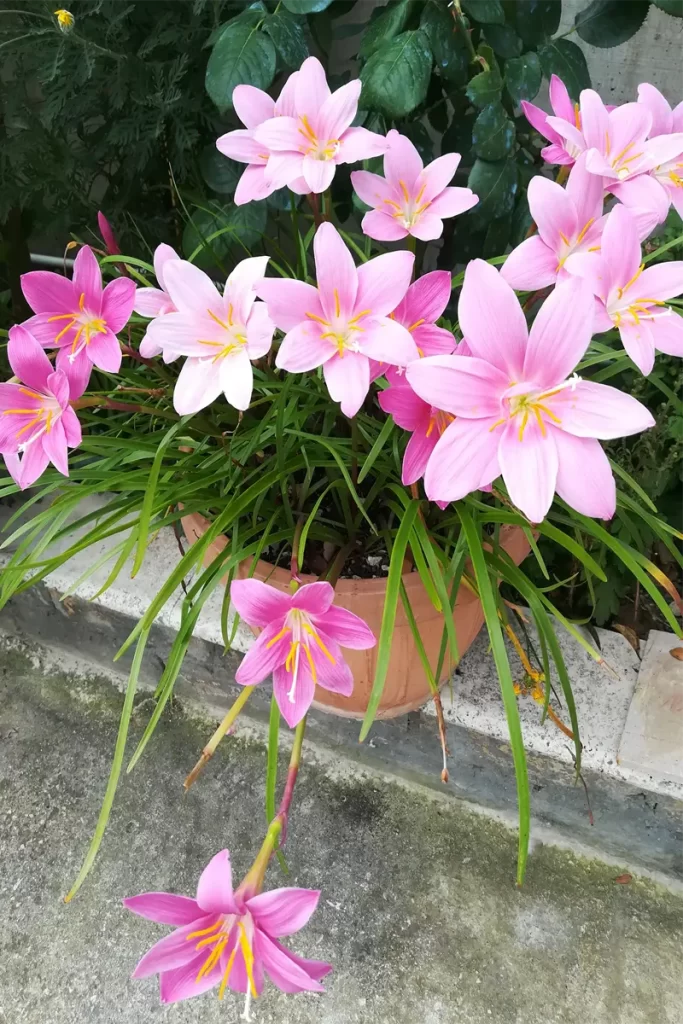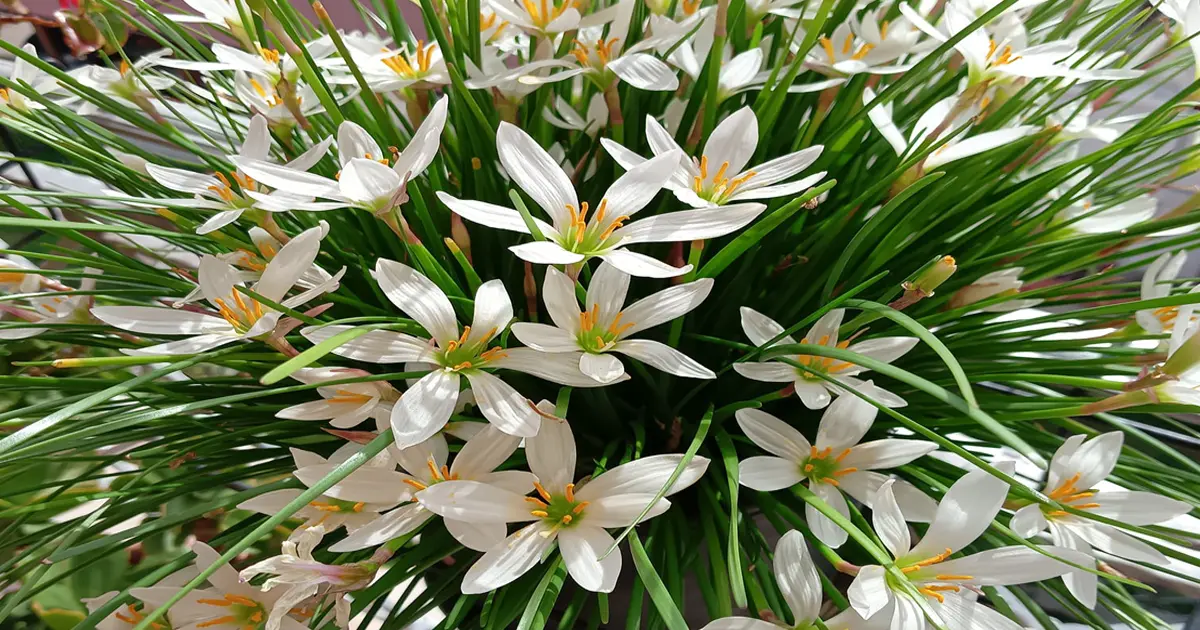Rain lilies, known scientifically as Zephyranthes, are admired for their delicate beauty and their ability to bloom suddenly after rainfall, adding a burst of color to any garden. However, achieving a lush and vibrant bloom can be a challenge without the right care techniques. In this article, we explore the best methods to ensure your rain lilies bloom gorgeously, from proper planting conditions to ongoing care, ensuring a stunning display of flowers throughout the season.
1. Understanding Rain Lilies: A Brief Overview
Rain lilies, often referred to as fairy lilies or zephyr lilies, are perennial plants native to warm and tropical regions. They typically bloom in response to heavy rainfall, making them ideal for regions with seasonal rain patterns. These flowers come in a variety of colors, including pink, white, and yellow, and their elegant appearance makes them a popular choice for gardeners looking to enhance their flower beds or borders.
Understanding the natural growth cycle and specific needs of rain lilies is crucial for ensuring consistent and abundant blooming. These plants are relatively low-maintenance but thrive under specific conditions, which we’ll discuss in detail below.
2. Selecting the Right Soil for Your Rain Lily
One of the most critical factors influencing the health and bloom of rain lilies is soil quality. Rain lilies prefer well-draining soil with a slightly acidic to neutral pH (between 6.0 and 7.0). Proper drainage is essential because rain lilies are susceptible to root rot if left in waterlogged soil.
- Soil Type: Use a mixture of loamy or sandy soil to ensure adequate drainage.
- Organic Matter: Incorporating organic compost or well-rotted manure into the soil can help improve fertility, ensuring the plant receives essential nutrients.
- Mulching: A layer of organic mulch can help retain soil moisture while preventing weeds, which can compete with your rain lilies for nutrients.
For the best results, plant your bulbs in raised beds or containers if your garden soil tends to retain water.

3. Ideal Planting Conditions for Maximum Bloom
Rain lilies flourish when provided with the right planting conditions. Follow these steps to ensure your bulbs grow healthy and strong:
- Planting Depth: Plant the bulbs about 2-3 inches deep with the pointed end facing upwards.
- Spacing: Space the bulbs 6-8 inches apart to allow for adequate air circulation and to prevent overcrowding, which can inhibit blooming.
- Sunlight Requirements: Rain lilies perform best in areas with full sun to partial shade. They need at least 6 hours of direct sunlight daily to thrive, though they can tolerate some afternoon shade in hotter climates.
Seasonal Considerations
Rain lilies should be planted in the spring after the last frost to ensure a healthy start. If you live in a region with mild winters, rain lilies can be planted year-round. However, in colder climates, the bulbs should be dug up and stored indoors over the winter to protect them from frost damage.
4. Watering Your Rain Lilies: When and How Much
Water is a key factor in encouraging rain lilies to bloom, but the frequency and amount of water are important to regulate. While rain lilies are drought-tolerant once established, they bloom best when provided with consistent moisture, particularly during the growing season.
- Watering Frequency: During periods of dry weather, water your rain lilies deeply once a week. The soil should be kept moist but not soggy, as overwatering can lead to bulb rot.
- Rain Stimulation: Rain lilies are known for their ability to bloom after heavy rains. You can replicate this effect by mimicking rainfall with thorough irrigation or waiting for a natural rain shower to stimulate blooms.
- Watering Technique: Water at the base of the plants to avoid wetting the foliage, which can reduce the risk of fungal diseases.

5. Fertilizing for Abundant Blooms
To encourage vigorous growth and abundant blooming, proper fertilization is essential. Rain lilies benefit from regular feeding during the growing season, particularly in the spring and summer when they are most active.
- Balanced Fertilizer: Use a balanced, slow-release fertilizer (10-10-10) every 4-6 weeks during the growing season to promote healthy foliage and flower production.
- Organic Options: Alternatively, you can opt for organic fertilizers such as fish emulsion or compost tea, which provide a steady release of nutrients and improve soil structure over time.
- Avoid Over-fertilizing: Excess nitrogen can lead to lush foliage at the expense of flowers, so be careful not to over-fertilize your rain lilies.
6. Managing Pests and Diseases
Rain lilies are generally hardy plants with few serious pest or disease problems. However, some common issues can still arise, and proper care is necessary to keep your plants healthy and blooming.
- Aphids and Spider Mites: These common pests can attack rain lilies, particularly in hot, dry weather. You can control infestations by spraying your plants with a mild insecticidal soap or by introducing beneficial insects like ladybugs.
- Fungal Diseases: Overwatering or high humidity can lead to fungal infections such as leaf spot or root rot. Ensure proper drainage and avoid overhead watering to minimize the risk of disease.
- Slug and Snail Damage: Slugs and snails can also be a problem, especially in damp conditions. Use organic slug bait or place barriers like crushed eggshells around your plants to deter these pests.
7. Pruning and Deadheading for Continuous Blooms
Pruning rain lilies is a simple but effective way to encourage continuous blooms throughout the growing season. While rain lilies don’t require heavy pruning, deadheading—the removal of spent flowers—can significantly improve the plant’s appearance and performance.
- Deadheading: Remove any faded or wilting flowers to prevent the plant from focusing energy on seed production. This will encourage it to produce more blooms.
- Foliage Care: Allow the foliage to die back naturally at the end of the growing season, as this helps the plant store energy for the next bloom cycle.
8. Overwintering and Long-Term Care
In colder climates, where frost can damage rain lily bulbs, proper overwintering techniques are crucial to ensuring the plants return year after year.
- Lifting the Bulbs: In areas where the temperature falls below 40°F (4°C), dig up the bulbs after the foliage dies back. Store them in a cool, dry place until spring.
- Indoor Storage: Place the bulbs in a paper bag or breathable container filled with dry peat moss or sand to prevent them from drying out.
- Replanting: Replant the bulbs in the spring, following the same guidelines for depth and spacing, to enjoy another season of beautiful blooms.
9. Companion Planting for Rain Lilies
Pairing your rain lilies with the right plants can enhance their beauty and create a more dynamic garden display. Rain lilies look particularly stunning when planted alongside other low-growing perennials or groundcovers.
- Companion Plants: Consider planting rain lilies with creeping thyme, sedum, or creeping phlox, which provide a lovely contrast in color and texture.
- Seasonal Blooms: Rain lilies also pair well with other late summer bloomers like dahlias, hostas, or daylilies, extending the visual interest of your garden well into the fall.
By following these expert techniques, you’ll be able to cultivate rain lilies that bloom gorgeously year after year, turning your garden into a vibrant display of color.

